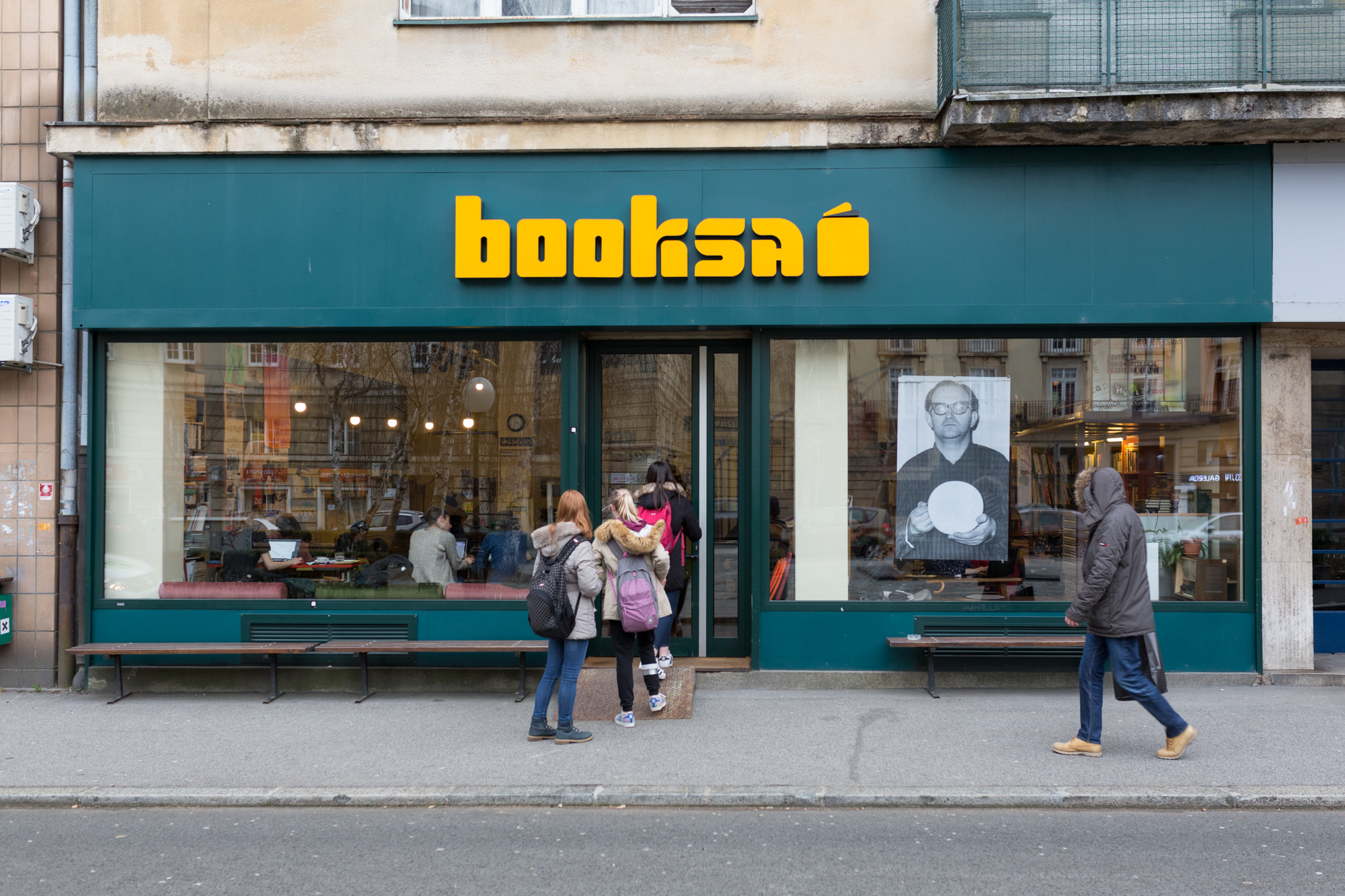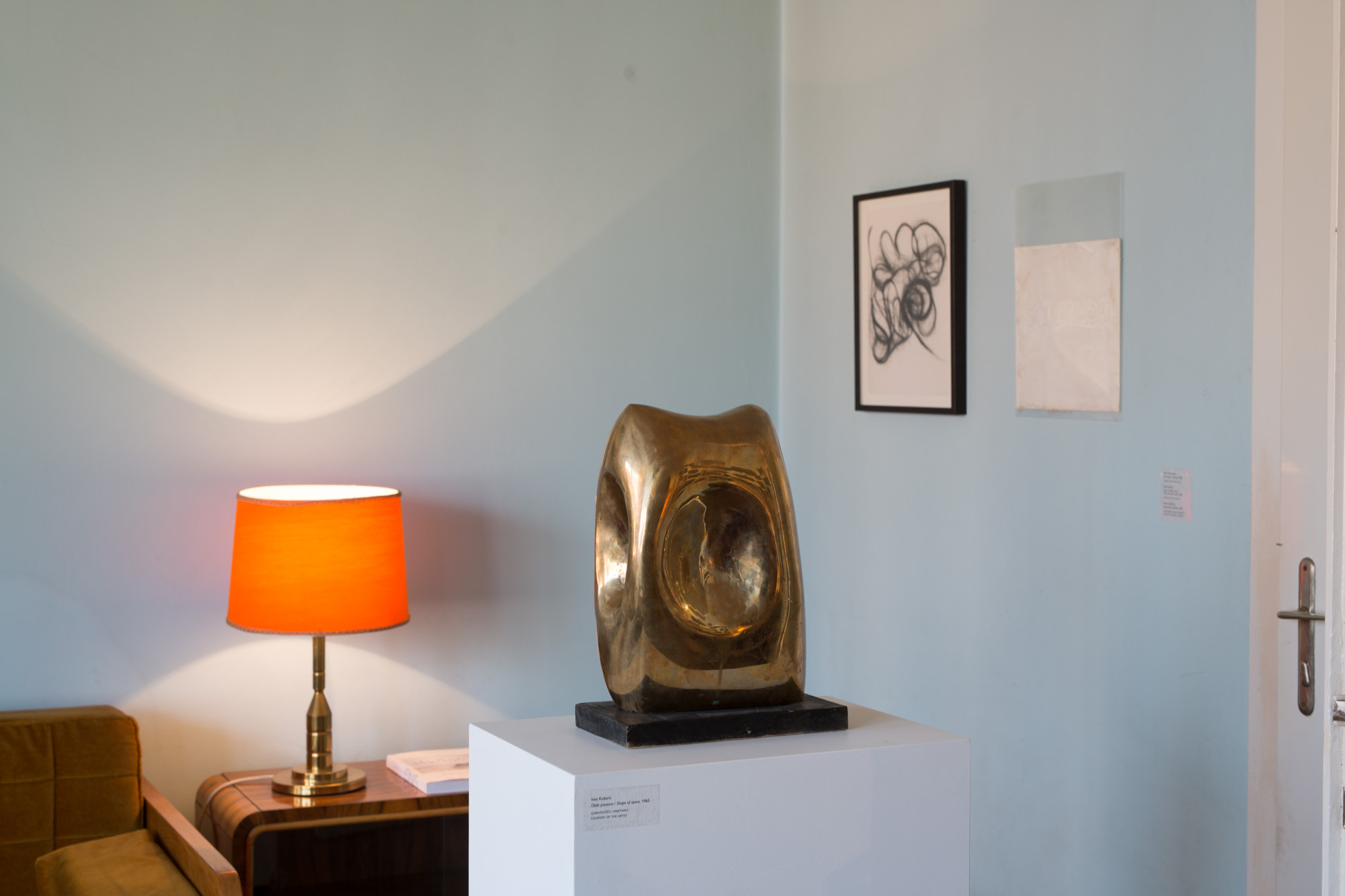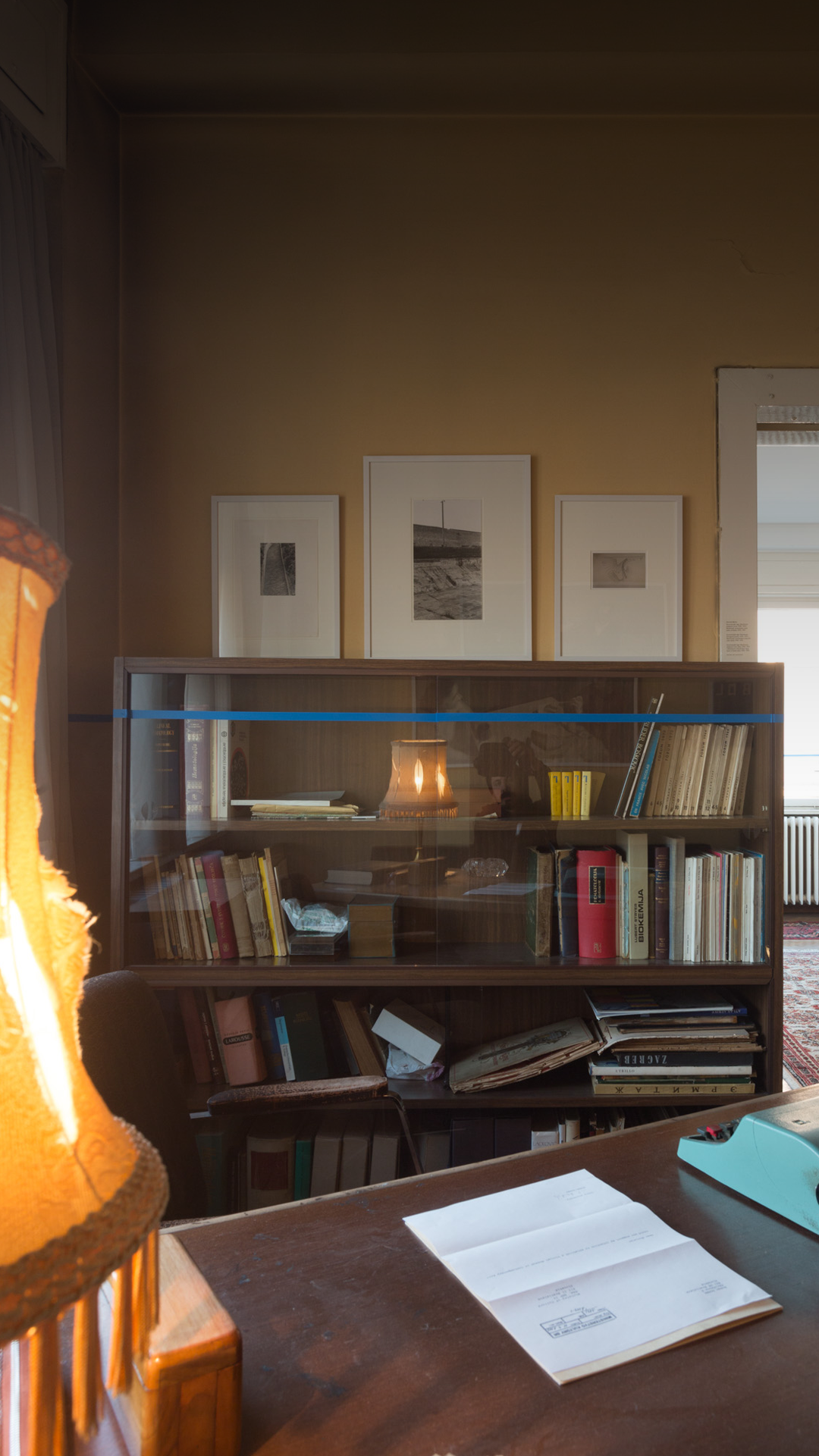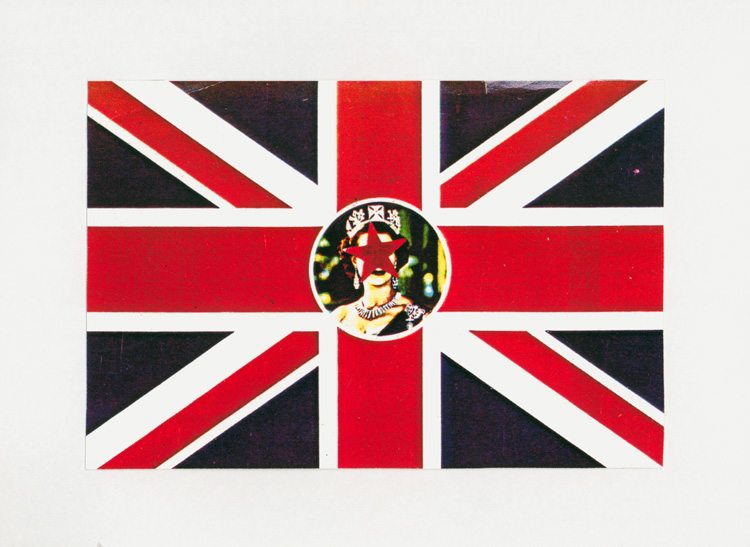06 April 2017
As a collaboration of the Kontakt Collection and WHW, the experimental exhibition “My sweet little lamb (Everything we see could also be otherwise)” in Zagreb opened new avenues for displaying and communicating art. Until 20 November 2017, The Showroom in London presents the last episode – the epilogue – out of seven chapters of this long-term project.
“Everything we see could also be otherwise,” claimed the Zagreb based artist Mladen Stilinović many years ago. He died in 2016, at the age of 69. As early as the late 1920s, René Magritte made his audience ponder whether or not painted pipes are real pipes; in this spirit, Stilinović – as if to prove this – added the drawing of a little pig to the rapturous exclamation “My sweet little lamb”.
The curatorial collective What, How & for Whom/WHW selected this virtually “post-truth” work title by Mladen Stilinović, an important exponent of the Croatian Neo-Avantgarde, as the title of an exhibition series in Zagreb with a finale in London: “My sweet little lamb (Everything we see could also be otherwise)”.
Everything we see could also be otherwise (My sweet little lamb)
The Showroom
63 Penfold Street, London
20 September–11 November 2017
Wednesday – Saturday, 12 – 6 pm
Ivet Ćurlin, Ana Dević, Nataša Ilić and Sabina Sabolović collaborated with Kathrin Rhomberg, artistic director of the Kontakt Collection, to conceive a diverse series of exhibitions, events, lectures and performances. The Kontakt Collection itself served as a starting point for this unusual project that is continually shown in often small institutions of Zagreb’s art scene over the course of several months.
The Kontakt Collection is not a corporate collection. Legally speaking, it is a non-profit association, its members including Erste Group, the subsidiary banks Banca Comerciala Romana, Ceská spořitelna, Erste Bank Croatia, Erste Bank Hungary and Slovenská sporitel’ňa as well as ERSTE Foundation.
Kathrin Rhomberg
Kathrin Rhomberg is an independent curator, lecturer at the Academy of Fine Arts in Vienna and chairwoman and artistic director of the Kontakt Collection.
Its exhibitions and collection activities are funded by membership fees and grants. The collection does not permanently display its holdings, nor does it have its own museum. The artworks do not even decorate the office space of Erste Group. This is mainly due to its focus on collecting conceptual art.
With the help of an art advisory committee consisting of the curators Silvia Eiblmayr, Georg Schöllhammer, Jiří Ševčík and Branka Stipančić and the director of documenta 14, Adam Szymczyk, a first-class, unique collection of contemporary art from Central, Eastern and South-Eastern Europe has evolved over the past ten years with a clear focus on experimental artistic practices.
What, How & for Whom
WHW is a curatorial collective founded in 1999 in Zagreb. Its members are Ivet Ćurlin, Ana Dević, Nataša Ilić and Sabina Sabolović. Over the past 15 years WHW has directed the Nova Gallery in Zagreb and curated numerous international exhibitions, including the 11th Istanbul Biennial 2009.
www.whw.hr
An important aspect of its collection activities is the conservation of and scientific research into estates and archives of core critical artistic positions of the countries of what was formerly called the Eastern Bloc.
The exhibition “My sweet little lamb (Everything we see could also be otherwise)” took advantage of the wealth of artworks in this collection, juxtaposing important historical works from the Kontakt Art Collection with new creations by invited artists at different locations of the Zagreb art world. The project unfolds along a timeline and resembles a city walking tour leading through galleries, artist studios, off-art spaces and even one privately-owned flat over the course of several months; it attracts an interested audience with numerous events and a constant flow of new openings. The curators divided the exhibition series into six episodes. Following the pilot, other episodes told stories such as that of “bodies, sex, politics, age and death that meet and get mixed up” and that of the “dance of the bodies and institutions”.
Since an explicitly nationalist government came into power in the youngest member state of the European Union, Croatia’s culture scene has again become more politicised in recent years. Art is a political statement again. This makes for very exciting dialogues resulting from juxtaposing historical and current social interventions.
During the openings of the fifth episode, Maribel Königer spoke with Ana Dević and Sabina Sabolović from WHW and Kathrin Rhomberg, artistic director and chairwoman of the Kontakt Art Collection association, about their experimental exhibition and the current situation in Zagreb. The last episode opened in London
“My sweet little lamb (Everything we see could also be otherwise)” is an exhibition in six episodes in many locations in Zagreb. Where did this idea come from?
Ana Dević: In 2016, Kathrin Rhomberg and Hephzibah Druml of the Kontakt Art Collection visited the David Maljković exhibition. This “Retrospective By Appointment”, curated by WHW, was totally deconstructed. Instead of presenting his consistent and internationally well-known artistic practice in one single venue we decided to apply a format that was deliberately fragmented. We used small galleries, independent spaces, and David’s studio, that means his private space. With “My sweet little lamb” we again made a sharp intervention into Zagreb’s institutional landscape.
Our main questions have been: how to present a collection and how to experiment with the exhibition format today. Kontakt is a nomadic collection. It is not permanently installed in a museum but brings the works back to the territory, the political terrain where this art originates. This is an act of generosity that we wanted to use as well as to show. Another reason was that we wanted to do an “exhibition in time” that keeps up the momentum by including as many interesting spaces and organisations as possible. Sanja Iveković, for example, introduced her archive in her private space during the first episode. In this way we created an ongoing flow of events and exhibitions during the last four months, an opportunity for people to get together.
“It is an act of generosity to bring the works back to the territory where this art originates.”
Was it easy to find the institutions to collaborate with?
Ana Dević: We created a very good energy around the project and we easily found organisations like ours to collaborate with as the Zagreb scene is very much characterised by a network of independent organisations and smaller spaces working along similar lines. We also inaugurated a new space, Apartment Softić situated on the main square in Zagreb. We rented it for the exhibition to create a new space that attracts new audiences. While visiting the exhibitions, people were sitting there, having conversations, and enjoying the set. This atmosphere is very difficult to achieve in museums, even in galleries. People took this spectacular space with its beautiful setting and panoramic view as a gift.

My Sweet Little Lamb, venue in Zagreb; photo: Damir Žižic
The first episode of the exhibition was announced as ‘pilot’, a term that is used in TV series. Why that analogy? Does the exhibition tell a story?
Ana Dević: We are playing around with the idea of a series. In the pilot we present the proportion and the scope of the project to the audience. And we wanted to establish a dialogue between historical and contemporary works. We looked into similarities and differences between curating and collecting. Each exhibition series has its own narrative. Since the exhibition is decentralised we play with motives that appear and reappear in different spaces like echoes.
What ‘protagonists’ meet in an episode? Can you describe such a dialogue?
Ana Dević: The Tomislav Gotovac Institute is a small space but a fantastic independent institution inaugurated a couple of years ago by the artist’s daughter Sarah Gotovac and his widow Zora Cazi-Gotovac. We put this very special place in dialogue with a work by VALIE EXPORT from the Kontakt Art Collection. Her work has many similarities with the work of Tomislav Gotovac, particularly concerning the ideology of the body. We also invited the Russian contemporary artist Nikolay Oleynikov, who created a new work especially for this place that questioned the role of gender, body and ideology in the public space.
Will the new commissioned works enter the collection?
Kathrin Rhomberg: Not necessarily. We have an art advisory board that proposes what we purchase. But thanks to the collaboration with WHW we see the gaps in the collection much more clearly and can imagine the direction in which the collection should be developed. The exhibition project in Zagreb is an experimental arrangement. It works with the collection in a very open and vivid way. And it infiltrates not only the city of Zagreb but also its reality. This was also a demand of the Neo-Avantgarde to which most of the works in the collection belong.
Ana Dević: Many works that we showed had a very limited audience at the time of their production. Twenty years ago, East and West discovered each other’s art. That was to some extent problematic because the art scenes of former Yugoslavia, of Romania and the Czech Republic have their own modernist Avantgarde tradition. Artists, market and the whole world of art are very much determined by an extremely powerful art system. People like Július Koller, Tomislav Gotovac and Mladen Stilinović had a genuinely anarchistic or even anti-art approach. They totally restructured power relations and questioned how art is produced and mediated. They are still very important pillars when we try to rethink our own current positions.
Kathrin Rhomberg: In fact this artistic approach is an inspiration for many young artists and curators nowadays. Artists of a younger generation have difficulties in finding a position outside the contemporary art system. In the mid-sixties, Július Koller questioned art because he considered it to be corrupted and powerless. Today, we are facing a similar situation. One of Július Koller’s conclusions was not to create a new art or a new aesthetics but rather “a new cultural situation”, which leads to a “new life, a new creativity, and a new cosmo-humanistic culture”. He called on artists “to engage instead of to arrange” and thus to exert an impact on reality through artistic means. Nowadays we are again asking ourselves: How can we renew art and its position in our society?

Sweet little lamb (2017): Zagreb interior; Photo: Damir Žižic
Did the exhibition play with the private and the public spheres?
Ana Dević: We used the collection as a starting point and as a resource. Since the relationship between private and public is one of the central themes in the collection – apart from the position of the object in space or conceptual analysis – this problem permeated the whole exhibition. It was not so much about control and surveillance as about how politics and ideology prevail in the public sphere. And it was about access: so all the exhibitions and programmes of “My sweet little lamb (Everything we see can also be otherwise)” were free of charge.
Sabina Sabolović: The decision to collaborate with many institutions and to introduce private spaces into the format of the exhibition was also grounded in the political situation when we started developing the project in early 2016. At that time, Croatia had the harshest right wing government in the last decade. The Ministry of Culture in particular represented an openly radical right wing position and started a direct attack. A lot of progressive, critical initiatives of the cultural scene have been closed, exhausted and diminished. It is very important to stress that we have a network at our disposal and that there are a lot of spaces that are working in a way that corresponds to the critical position of the artists who are part of the Kontakt Art Collection. We want to support this network. This is why we include a series of smaller progressive institutions. It is a sign that we will resist and build a multitude of opportunities, that there are cultural workers who will insist on the continuity of their critical works despite the government’s cultural policies.
Kathrin Rhomberg: What is fantastic with the Kontakt Art Collection is that we can react very fast and step immediately into such a situation. We were able to change content or subjects from one episode to the other and did not have to decide the list of works and the exhibition’s concept one year in advance. This distinguishes us radically from established institutions such as museums.
Ana Dević: Kontakt offered its collection both as a tool and a support structure. It is amazing that the collection is structured in such a generous way so that this kind of exchange is possible.
Mladen Stilinović delivered not only the title of the exhibition. You also quoted him in the catalogue: “All money is dirty, and all money is ours.” The formula to survive when times for art are tough?
Ana Dević: In times of drastic cuts in the cultural sector and its increasing dependency on private money accumulated as a result of financial speculation that wreaked havoc on social structures, to dedicate the project to Mladen Stilinović also means to rely on his thinking about these issues. The question about where the money comes from is linked to the question of whether restrictions come with it and what kind of restrictions. We always insist on a value system that does not limit the artistic and curatorial imagination, and that is generous to the audience.

Sweet little lamb (2017): Zagreb interior; Photo: Damir Žižic
Does art have an impact on society today?
Ana Dević: On the international level of real politics we are witnessing a great lack of progressive political emancipatory ideas to tackle all the injustice shaping the world around us. Contemporary art has an impact on the imagination by offering people the strength to imagine the world otherwise; also cultural workers often are the ones that initiate and articulate actions like protests and develop tools for self-organisation.
Sabina Sabolović: The values that are in focus should be infused with questions about equality. We need personal, political, and artistic engagement and answers to the tremendous challenges of our time. I am not idealistic or naive about art’s role in that process. But its role is still important.
On the occasion of this exhibition we have the chance to work with many fantastic artists, visionary artists, artist-philosophers of a sort. They do not offer a remedy or a solution but they teach us how to see. That is why we took Mladen’s quote as title of the exhibition: “My sweet little lamb (Everything we see could also be otherwise)”. His text is humorous, absurd, and poetic all at the same time. It is paired with the drawing of a little pig (not a lamb). This is a metaphor of contemporary life and the politics that we are facing now.
Today, lots of data are available: on global warming, on contemporary politics etc. and still people refuse to see what’s going on. The challenge to see more clearly is the first step in changing politics, institutions or ourselves.
Will the exhibition have a sustainable effect?
Ana Dević: At the moment we are quite pessimistic. In Croatia, we are witnessing a complete collapse of institutions. The Croatian Audiovisual Centre, for example, did tremendous work for the production of contemporary experimental artistic films a couple of years ago. Today, it is hijacked by the extreme right. Will our project have a long-term effect? It’s difficult to say. What I know for sure is that this level of connection between people, locally and internationally, will remain. In that sense it was worth it.
Sabina Sabolović: In times of constant emergencies, breaks, explosions of all kind the effort of continuity is extremely important. People appreciate that there are cultural workers who fight to open up the space for dialogue, for exchange, for learning from each other. We need a space that is a safe place for conflict and disagreement, for new questions. If anyone had told me ten years ago that today I would be defending the basic space for the plurality of voices I would have answered: Come on, this fight is over! But right now, that is exactly what we are doing. And we are not going to give up on this. It is an extremely important space to build and to preserve.

Mladen Stilinović
Red – Pink, 1975/1976
Queen (1), 1976
© Kontakt. The Art Collection of Erste Group and ERSTE Foundation
My sweet little lamb (Everything we see could also be otherwise)
a series of exhibitions based on the Kontakt Art Collection dedicated to Mladen Stilinović
First Episode
4 November 2016 – 10 December 2016
Halil Altindere, Heimrad Bäcker, Mária Bartuszová, Geta Brătescu, Dimitrije Bašičević Mangelos, Stano Filko, Oliver Frljić, Ivan Ladislav Galeta, Marcus Geiger, Ion Grigorescu, Tomislav Gotovac, Sanja Iveković, Běla Kolářová, Július Koller, Ivan Kožarić, Edward Krasiński, KwieKulik, Katalin Ladik, Karel Malich, Dezsö Magyar, Vlado Martek, Dalibor Martinis, Dóra Maurer, Jan Mlčoch, Paul Neagu, Roman Ondak, Goran Petercol, Hans Scheirl, Mladen Stilinović, Petr Štembera, Slaven Tolj, Goran Trbuljak, Wu Tsang
Second Episode
29 November 2016 – 22 December 2016
Geta Brătescu, Anna Daučíková, Tim Etchells, VALIE EXPORT, Tomislav Gotovac, Ion Grigorescu, Tibor Hajas, Nikolay Oleynikov, Ewa Partum, Mladen Stilinović, Artur Żmijewski
Third Episode
15 December 2016 – 4 February 2017
BADco., Chto Delat, Keti Chukhrov, Sanja Iveković, Eva Koťátková, KwieKulik, Ashley Hans Scheirl, Mladen Stilinović
Fourth Episode
17 February 2017 – 25 March 2017
Đorđe Andrejević Kun, Josef Dabernig, Ion Grigorescu, Sanja Iveković, Gülsün Karamustafa, Július Koller, Jiří Kovanda, Ivan Kožarić, Vlado Kristl, Katalin Ladik, Kazimir Malevich, Slavko Marić, Vlado Martek, Rabih Mroué, Neša Paripović, Goran Petercol, Marko Ristić, Mladen Stilinović, Sven Stilinović, Ana Vuzdarić, Marko Gutić Mižimakov, Goran Trbuljak
Fifth Episode
17 February 2017 – 18 February 2017
Zdenka Badovinac, Charles Esche, Kate Fowle, Katalin Ladik, Joanna Mytkowska, Manuel Pelmuş, Nikolay Punin, Erzen Shkololli, Françoise Vergès
Sixth Episode
12 April 2017 – 8 May 2017
Paweł Althamer, Mária Bartuszová, Pavel Brăila, Geta Brătescu, Boris Cvjetanović, Josef Dabernig, Marijan Detoni, Stanisław Dróżdż, Nika Dubrovsky, Róza El-Hassan, Miklós Erdély, Tim Etchells, VALIE EXPORT, Stano Filko, Heinz Gappmayr, Tomislav Gotovac, Ion Grigorescu, Tina Gverović & Siniša Ilić, Sanja Iveković, Běla Kolářová, Julije Knifer, Daniel Knorr, Július Koller, Jiří Kovanda, Paweł Kwiek, Ivan Kožarić, Katalin Ladik, Victoria Lomasko, David Maljković, Karel Malich, Dorit Margreiter, Vlado Martek, Dalibor Martinis, Dóra Maurer, Karel Miler, Jan Mlčoch, Paul Neagu, OHO, Roman Ondak, Boris Ondreička / Ján Zavarský / Vít Havránek, Neša Paripović, Cora Pongracz, Nedko Solakov, Margherita Spiluttini, Tamás St. Auby, Mladen Stilinoviċ, Sven Stilinović, Petr Štembera, Raša Todosijević, Slaven Tolj, Milica Tomić, Goran Trbuljak, Mona Vătămanu & Florin Tudor, Clemens von Wedemeyer, Lois Weinberger, Heimo Zobernig, Želimir Žilnik
Epilogue (London)
20 September–11 November 2017
Geta Brătescu, Lutz Becker, Josef Dabernig, Nika Dubrovsky, Tim Etchells, VALIE EXPORT, Stano Filko, Marcus Geiger, Tomislav Gotovac, Vlatka Horvat, Sanja Iveković, Běla Kolářová, Július Koller, Jiří Kovanda, KwieKulik, Katalin Ladik, Dora Maurer, Oscar Murillo, David Maljković, Paul Neagu, Neša Paripović, Ewa Partum, Manuel Pelmuş, Cora Pongracz, Ashley Hans Scheirl, Mladen Stilinović, Petr Štembera, Goran Trbuljak, Mona Vătămanu and Florin Tudor, Stephen Willats
Venues in Zagreb:
Apartment Softić, Booksa, Cinema Tuškanac, DAZ, Forum Gallery, Greta Gallery, Nova Gallery, Vladimir Nazor Gallery, GMK, HDLU / Croatian Association of Artists, Institute for Contemporary Art, Tomislav Gotovac Institute, Sanja Iveković Archive, POGONJedinstvo, SC Gallery
Venue in London:
The Showroom